
|

HOME
THIS Page
NEWS
PHOTO
SHAIKH ZAYED
ABU DHABI
TUNISIA
AZZAMAN
ARTICLE
AL KHALIJ
CONTACT
SOMALIA
LINKS
GUEST BOOK
PAGE
Custom4 Page
Shopping Page Page
Slide Show Page
Whats New Page
|
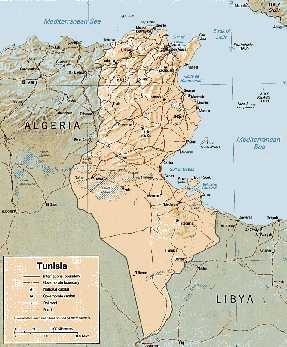
|
|
|

|
|
|
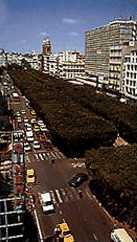
|
Tunisia's beautiful beaches and historical treasures attract millions of tourists from all over the world. Nearly 4 million tourists visited Tunisia in 1994. American and most European tourists do not require visas to enter Tunisia. There are more than 600 hotels in the country, totaling 155,000 beds and 75,000 rooms. Six international airports, and seven passenger ports connect Tunisia to the United States and Europe. The capital city, Tunis, is a two-hour flight from Paris and London and a fifty- minute flight from Rome. Daily flights connect Tunisia to virtually all European, African and Middle Eastern destinations.
MEDITERRANEAN COAST
Visitors sunbathe, dive, sail, and fish along the vast stretches of glistening, white sandy Mediterranean beaches covering a 810- mile coast. Beach resorts include Tabarka, Hammamet, Sousse and Jerba. El-Kantaoui's 27-hole golf course and Andalusian style marina is a fully-integrated tourism complex. The perched village of Sidi Bou Said offers a unique scenery of domes, arched doors and balconies in blue and white set against a sparkling sea.
ARCHAEOLOGY
Punic and Roman archaeological sites can be visited in Carthage and other historical areas around the country. They include second century Roman temple in Dougga, the Phoenician port of Utica, Sbeitla's Roman temples and arches, Bulla Regia's Roman villas and El Jem's Coliseum, which is second only to Rome. The Bardo Museum, near Tunis, boasts the largest collection of Roman mosaics in the world.
ARCHITECTURE
Masterpieces of Arab-Islamic architecture attract the attention of visitors. Among them: the Great Mosque of Kairouan, the Moslem World's fourth holiest city, and the Great Mosque of Ezzitouna, at the center of the old city (the Medina) of Tunis.
|
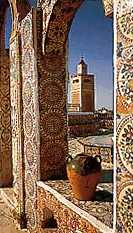
|
|
|
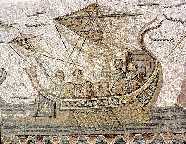
|
HISTORY IN BRIEF
814 BC: Foundation of Carthage by Phoenician settlers led by Queen Dido.
264 BC to 146 BC: The Punic Wars: Three wars with Rome, including elephant-mounted expedition by Hannibal across the Alps (218-202 BC,) end with the defeat of Carthage.
146 BC-439: Establishment of the first Roman Colony, Africa, and its attachment to the Roman Empire.
439: Takeover of Carthage by the Vandals.
533: Takeover of Carthage by the Byzantines.
647-698: Advent of the Arab-Islamic period. Foundation of Kairouan by Oqba lbn Nafaa (670), and takeover of Carthage by the Arabs (698).
800-909: Expansion of Islam and establishment of the Aghlabid Dynasty. (Construction of the Zitouna Mosque in Tunis).
909-1159: Fatimid and Zirides dynasties. Foundation of Mahdia (921).
1159-1230: Almohads unify the Maghreb countries and Moslem Andalusia.
1230-1574: The Hafsids break away from Almohads and establish new dynasty based in Tunis.
1574: Tunisia becomes part of the Ottoman Empire.
1705-1881: Husseinite Dynasty.
1881-1956: French Protectorate (established 12 May 1881). Anti-colonial resistance, led mostly by the Neo-Destour party, persisted for most of the 75 years of French domination.
1956 (20 March): Independence from France.
1957 (25 July): Proclamation of the Republic. Habib Bourguiba becomes first President of Independent Tunisia.
1959 (1st June): Adoption of the first Constitution of the Republic of Tunisia.
1963 (15 October): The French evacuate Bizerta, their last base in the country.
1987 (7 November): In conformity with the Constitution, Prime Minister Zine El Abidine Ben Ali succeeds President Bourguiba who is declared by his physicians unable to continue assuming the duties of the Office. President Ben Ali is sworn-in by Parliament.
1989 (2 April): Presidential and legislative elections. Zine El Abidine Ben Ali elected President.
1994 (20 March): Presidential and legislative elections. Re-election of President Ben Ali and accession of the opposition to Parliament, for the first time in the history of independent Tunisia.
1999(24 October): After first-ever contested presidential elections, President Ben Ali is re-elected by an overwhelming majority for a third term. the Democratic Constitutional Rally keeps its majority in the Chamber of Deputies but the opposition garners 20% of the seats.
The number of women in Parliament also increases to 21
|
|
|
|
|
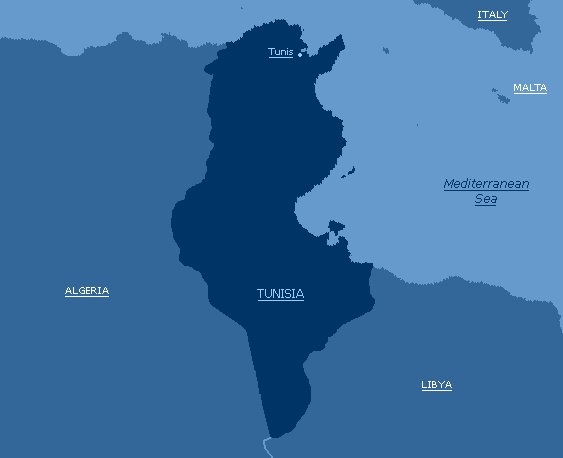
|
PARKS AND NATURAL RESERVES
In an effort to preserve its ecological heritage, Tunisia has turned its natural areas into six national parks-with three more being created- and an archeological park:
Gulf of Tunis: 230 plants species
Islands of Zembra: 391 hectares
Zembra-389 hectares (created in 1977)
Zembretta-2 hectares nearest coast
27 species (red-green and brown algae).
Ichkeul: 12,600 hectares
600 plant species
200 to 300 thousand migrating fowl.
Chaambi: 6,723 hectares
Aleppo pine forests
100 plant species
24 mammal species
196 reptile and batrachian species.
Bou Hedma: 16,488 hectares
350 plant species
28 mammal species
133 bird species
33 reptile species.
Boukornine:
Forest vegetation, rich and varied fauna
A large number of Persian Cyclamens
Feija: cork-oak forest and rich
varied vegetation
500 species of orchids and ferns
25 species of mammals, reptiles, and amphibians.
NATURAL RESERVES
There are some 18 natural reserves, among the oldest of which are:
The Mhibes Reserve for the protection of the Barbary deer
The Dar chichou Reserve for deer and buffalo
The Kchem El Kelb Reserve for gazelles
The Orbat a Reserve for the reproduction of gazelles and ostriches.
Fourteen new sites have been classified as natural reserves by a decree of the Ministry of Agriculture dated 18 December 1993, including the island of Chikli (in the Lake of Tunis), and the inter tidal zones of Kneiss (Gulf of Gabes).
The creation of these national parks and natural reserves has made it possible not only to protect native fauna and flora, but also to reintroduce species that had disappeared. Thus, it has been possible to reintroduce addax, oryx, ostriches, gazelles and maenad mouflons into Bou Hedma National Park. The reintroduction of specific species into the parks of southern Tunisia will be undertaken on a wide scale.
THE LITTORAL
The Tunisian littoral consists of 1,298 Km of coastline the majority of which is beach. There exists more than 36,000 ha of littoral dunes, most of which are located in North and Northeast Tunisia. Many areas along this coast attract heavy
|
|
|